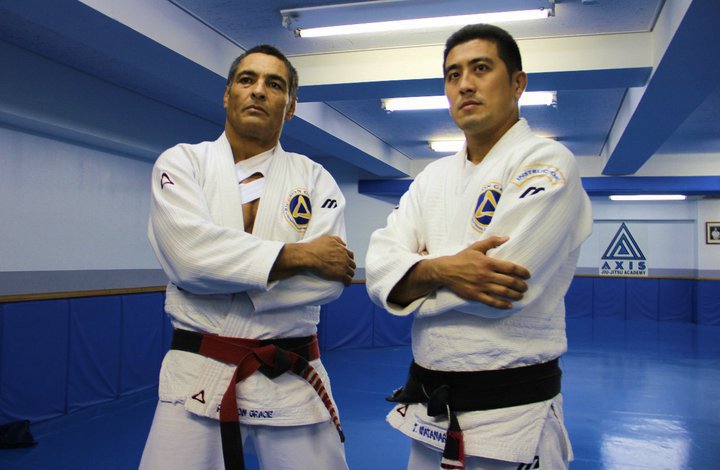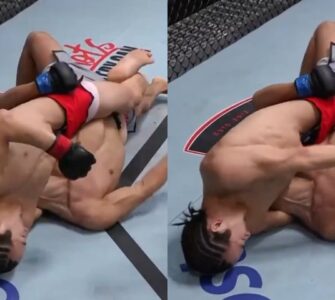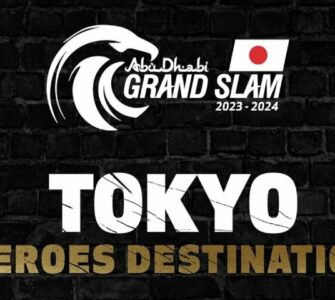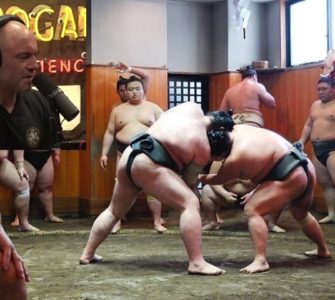A few months ago, we had the chance to interview Marius Varlan a Romanian BJJ player that had been training in Japan. He is a student of Takamasa Watanabe, a Rickson Gracie Black Belt. Japanese BJJ after Brazil and USA is arguably ranked 3rd in the world in terms of quality and achievement. Yuki Nakai, MMA and BJJ legend, is most probably the most famous out of Japanese BJJ players. He is the head coach of Paraestra BJJ Academy which has produced stars such as Shinya Aoki or Yusuke Honma. Nakai is also the head of the Japanes BJJ Federation that under IBJJF. There are also a large number of Brazilian/Japanese fighters such Christiano Kamanishi, Satoshi Souza, Marcos Souza and Mauricio Souza . Rickson Gracie black belt Taka Watanabe, is the head of the other Japanese federation which is supported by Rickson Gracie. In this great interview by BJJ Legends, Taka Watanabe tells us about his path from starting Jiu-Jitsu with Marcelo Behring to moving to Japan in 1992 in a strange reverse way, as a “pioneer” of BJJ in the land that first brought Jiu-Jitsu to Brazil with Maeda.
Source: BJJLegends.com
Taka Watanabe began his BJJ training at age 13 in Brazil, moving to Japan at age 20. Starting a federation in Japan not once, but twice was his way of breaking away against a new set of rules and dramatic changes that could stifle Japanese Jiu-Jitsu. Taka (and Rickson Gracie) with the JJFJ, break from the pack.
BJJ Legends: I’ve got a couple of questions here about Rickson Gracie’s Federation in Japan but first I’d like to find out more about you. Did you train with Rickson here in the States or in Brazil?
Takamasa Watanabe: No. I started with his student Marcelo Behring. He died when he was 33 or so. I am his purple belt. That’s in Brazil. I started when I was 13 years old. I came to Japan when I was 20. Until then I trained all the time in Brazil. Then I continued teaching here in Japan. Now our academy is called Axis but it was called Gracie Japan. I only started teaching straight from Rickson Gracie after I came to Japan.
How long have you had Axis and before that Gracie Japan?
TW: I came to Japan to go to university. I had no plans of opening an academy at all. At that time, Jiu-Jitsu was so small around the world.
What are we talking ’97, ’98?
TW: No no, ’92. I came when I was just a kid 19, so 92. At that time, it was before the fight the Ultimate Fight Championship of Royce Gracie. When I left Brazil what happened was many of my [Brazilian] friends thought they had really good Jiu-Jitsu schools in Japan. That’s what they thought. They thought that in Japan I would have really good training of Jiu-Jitsu. They said please teach us the techniques you got over there. But I came to Japan and nothing was going on. There was Judo. They thought since Jiu-Jitsu comes from Japan that I was going to go to the origin of the sun. I was going to have access to the purest techniques. But it wasn’t like that.
Axis Jiu-Jitsu Academy facilities
It’s ironic, Conde Koma (Mitsuyo Maeda) leaving Japan and going to Brazil and then some 80 years later you return to Japan. It’s kind of funny.
TW: When I came here, I was shocked because the Jiu-Jitsu I was doing in Brazil I couldn’t find here. Ok there was some training in Judo and some Sambo, that was the closest thing I could find but it was different. What happens is as soon as I got into the university I got some friends that use to do some Judo or some wrestling and I started teaching for them while I went to school. For four years, I was teaching and some guys saw me teaching my friends and the group got bigger and bigger and bigger and by 97, I had 40 students. I rented a place, got Judo mats and we trained. In 97, this guy I trained with got interested in opening a school for me. He lent me the money and I started teaching. I was teaching and still going to school. I hadn’t graduated yet. Then since I couldn’t teach full time, I started bringing the teachers over from Brazil. I was still a brown belt. Pretty early, when we opened the first instructor we had was Mauricio Gomes (Roger Gracie’s father) After that Tinguinha (Mauricio Mariano) and Marcio Feitosa came, they stayed only for a month and a half. I remember it was before the Pan Ams. They came here, trained for a while and went straight to the Pan Ams.
BJJ: Tell us about Rickson’s Federation, Jiu-Jitsu Federation of Japan (JJFJ).
TW: We just started in March 2008. The story of the federation is that in 97 I opened the first official Jiu-Jitsu academy in Japan. And in the same year, I started the Brazilian Jiu-Jitsu Federation of Japan. BJJFJ. And in 99, I had some problems with Carlos Gracie Jr. (Carlinhos). Nothing to do with the federation but with the academy. Because I opened the academy as an affiliation of his academy. We had a person problem. I don’t want to say details. What happened is that I wanted to quit the federation. So he knew another person from Japan, Yuki Nakai that was the only Japanese guy Carlinhos knew in Japan besides me. The federation was mine. It was up to me to give up the name. He could start a new one but I had already the federation. But I had a really good relationship with Nakai too. Nakai came to me saying what are we going to do about the federation? I told him to please use the name and the logo that I created. Everything, the database, I passed everything to him. That was in 99. That other federation I started. I did it for two years. I was the president then I passed it to Nakai. Things kept going on until last year when they put in some changes some stuff that wasn’t good, wasn’t a good job. Then I thought about starting a new federation. I asked Rickson what he thought about it. He said he’d back me up.
BJJ: How did you meet Rickson in Japan? Did he come over for a seminar?
TW: He had a student that was my teacher. We had the student in common. He always thought of me as the same lineage. He’d always thought about opening an academy. I never thought in my mind so I opened with Carlinhos Gracie. When I quit Gracie Jiu-Jitsu Japan, I thought my Jiu-Jitsu life was over. I didn’t want to teach anymore I wanted to close the academy and that’s it. Rickson contacted me and he said no, I never thought that would happen but now that it’s happened I want to keep you guys together. I am. He gave me the Black Belt. I received the purple belt from his student Marcelo Behring, the brown belt from Carlinhos Gracie, and when I opened the new academy Axis in 2000, I was still a brown belt. He gave me the black belt in 2002. I’m his black belt.
BJJ: What is the purpose or goal of this federation?
TW: There was a federation here in Japan going on already, for almost 10 years. I always competed in their championships. BJJFJ Brazilian Jiu-Jitsu Federation of Japan. All the tournaments we competed Axis as a gym won. We always supported that federation even though it wasn’t mine anymore. Then the next year two guys came into the federation and changed some of the rules. These new rules didn’t exist anywhere else in the world, only in Japan. They talked about getting belts and a system of membership for federated academies and athletes. So they created a business that was completely different from anything else going in the world, US Brazil and if I accepted that, my academy was the only one that had a voice. If I accepted then everybody would have to follow the rules. I couldn’t accept these rules. I asked Rickson, should I accept? He said, NO, we not going to accept and we’re going to do something new. So, that’s the beginning of JJFJ. Since they changed the rules, I started to work on a lot of stuff and in March of 2008 we opened the new federation.
BJJ: Who is supporting JJFJ? What fighters are going to fight at your tournaments?
TW: The new federation we had six championships in 2008 we brought more athletes from Brazil and other countries than 10 years of the other federation. I know a lot of people. I’ve been doing this a long time. We brought Kron Gracie, Rickson Gracie, Marcos Barbosa, Andre Galvao, Eduardo Telles, Leonardo Vieira, so all these guys we brought in 2008 I don’t think the other federation brought that many people in 10 years of a federation. Inside Japan, we have 128 academies affiliated. That’s because we are really strict about our criteria. We are not accepting people who are accepting the belt from nowhere, you know? The other federation is giving the belt. That was one of the main goals of the federation. For people who want to learn Jiu-Jitsu they can know which academies are accredited.

















